It is a beautiful weather today, the kind that makes you work outside. That means I’ll likely be puttering around in my garden looking for things to do. Unfortunately, it has been a couple weeks since I last provided an update on my garden, and a lot has happened!
Weather Based Planting
Planting your summer garden is based largely around the last frost date. Depending on how risky you want to be, that’s now. Therefore, you can plant anything that isn’t a warm weather plant. For my garden, that means everything is planted except my tomatoes and my watermelons.
A few weeks ago, your potatoes, leafy greens, peas, carrots, parsley, cilantro, and other cold tolerant plants should have been planted or transplanted outside.
This week, if you haven’t already, get those peppers in the ground. If you grew them from seed indoors, you have to harden them first. Hardening is the process of slowly introducing them to the outdoor sun. I found that peppers take pretty quickly to the outdoor sun, so that process should be pretty quick. With some other plants, like my basil, the process has taken a little longer.
Unless you want to take a risk, or you have some way to keep them warm on potentially cooler nights, don’t plant your tomatoes just yet! I planted a couple of mine because I have a way to keep them warm. Additionally, I have about 100 spare cherry tomato plants.
What I’ve Done the Past Three Weeks
Peppers
The bulk of my garden is going to be tomatoes, peppers, and potatoes. Last week I ended up planting my peppers because the 10 day forecast looked promising and they were already hardened. With my plants, I have a really hard time with impulse control, so I got the in the dirt as soon as the 10 day forecast looked good.
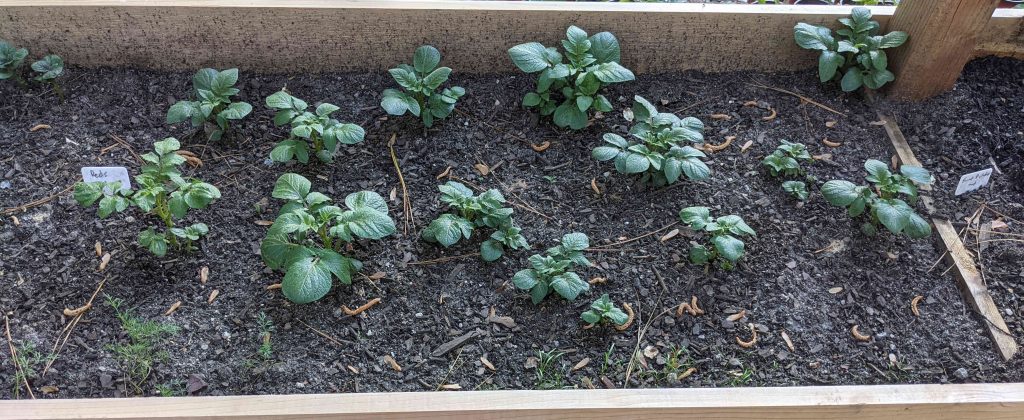
Potatoes
I planted my potatoes a long time ago because they go in the dirt well before the last frost date. They’re frost tolerant and they don’t love the heat. Therefore, they needed to get planted early. I’m happy to say they’ve sprouted magnificently!
Tomatoes
I’ve been working on transplanting my tomatoes to their intermediate planters and hardening them. My process is 4 part:
- Plant seeds in seed starters.
- Transplant to 3-6 inch planters and store indoors for a week.
- Harden the plants outdoors either in shade or for an increasing number of hours per day.
- Plant in the garden.
I’ve had tremendous success with this process. In fact, I haven’t lost a single plant after it has sprouted so far!
My indoor cherry tomatoes are starting to produce fruit! I have a couple of tomatoes and dozens of flowers. I’m excited to start enjoying the fresh cherry tomatoes.
Fun fact: Tomatoes self pollinate, so you don’t need bees in your indoor setup. To help the pollination, you should have a fan or shake the plants lightly after they’ve developed flowers. This helps move the pollen around.
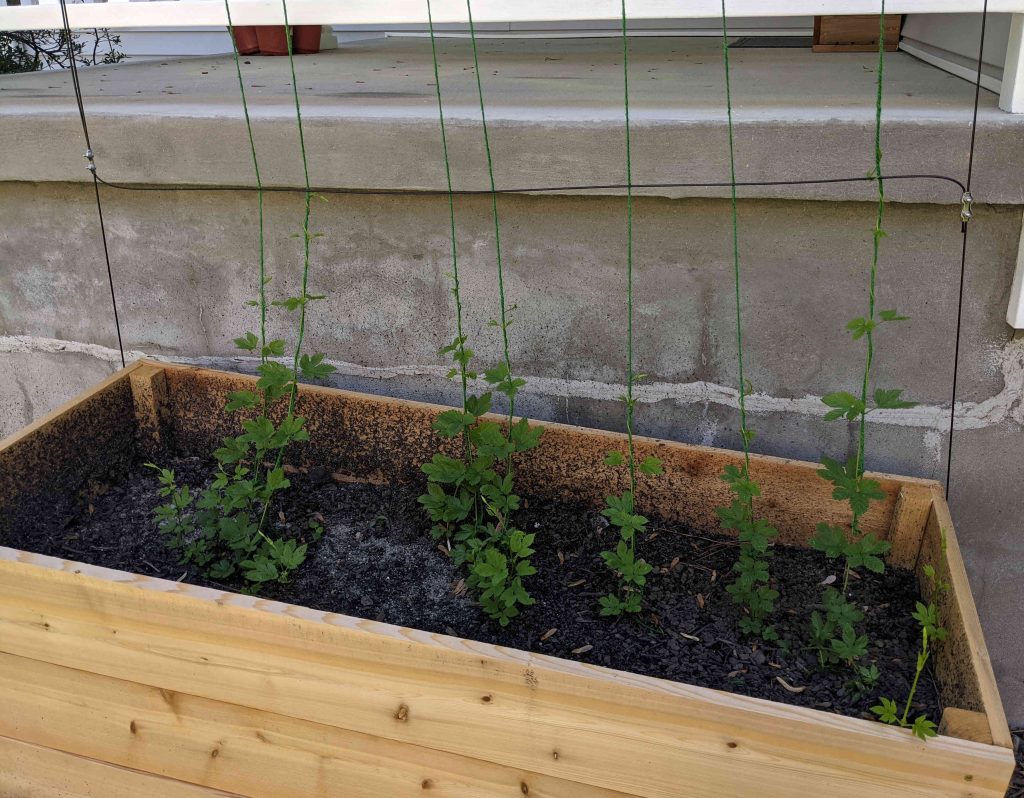
Hops
My hops are over a foot tall and I’ve attached strings to their trellis to help them climb the direction I want them to climb.
Carrots
I planted hundreds of carrot seeds outdoors and had a remarkable germination rate. I’ve thinned them once, but I need to thin them again. Depending on the type of carrot, you can only have one growing every 1-2 inches or they’ll fight with each other.
Green Onions
You know I love my green onions. I harvest them roughly every two weeks at this point and get quite the harvest.
Greens
It is lettuce season! If you planted your lettuce when I did, you should be enjoying basically endless salads. This isn’t olive garden. It’s better. I’ve had several salads out of my romaine, buttercrunch, and black seed sampson greens. Can’t wait to add other veggies to my salad too (for variety). Each bunch of greens can be harvested every 1-2 weeks, depending on growing conditions.
My last harvest gave us 4 meals total and they’re ready to be harvested again. That’s quite a payoff.
Beans
Beans and peas are different. Whereas peas are a cold tolerant plant, beans are surprisingly not. Therefore, I had to wait to plant my beans until this past week. I planted them the same time the forecast looked favorable. Many have already sprouted!
I have a variety of types of beans. Some are pole beans like my Kentucky Wonder, and some are bush beans like my Cantare Bush Beans. I chose the type based on where it was in the garden. And, I chose the place based on companion planting. I knew I wanted beans, but the main focus was tomatoes, peppers, and potatoes. Fortunately, these guys are companion plants to all 3.
Generally speaking, beans are only incompatible with other vining plants because they compete for space or other plants that produce nitrogen. Beans produce an excess of nitrogen and put that into the soil. Too much nitrogen will kill off plants, so it is best to pair with something that benefits from extra nitrogen. Keep in mind that you cannot fertilize near the beans with a fertilizer that has nitrogen in it.
Grapes
Our yard has some wild grape variety growing, so I put up a trellis and weeded around them. I’m eager to see what they grow.
Blackberries
We also have wild blackberries. I’ve been weeding around them in one area so that we can have some blackberry bushes. We’ll see if we get any fruit from them or if the birds get to them first.
Extra Extra!
Because I didn’t know what to expect this year as far as germination rates go, I planted a lot of peppers. I had extremely high germination rates in most of my varieties which means I have a lot of extra plants. Therefore, I’m offering a free bell pepper plant to the first reader who comments on this post who can pick up from my house in Durham, NC. Just sneaking this paragraph in here!
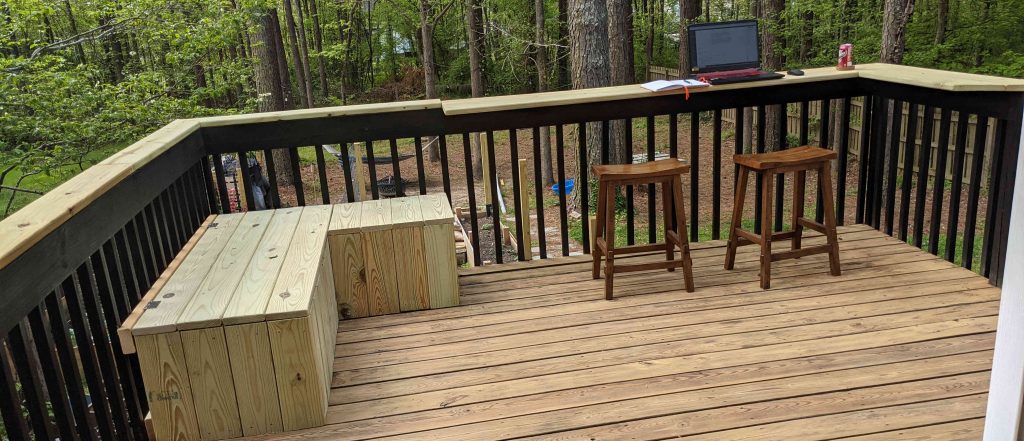
Work Outside
Last week, I redid my deck. I (and my brother-in-law) sanded the entire surface of the deck and the stairs because it was in really bad condition. Then, I took natural color deck sealer to refinish the surface.
While I was working on building a bar and seating, my wife painted the vertical portions black with a satin exterior paint. The result is a great contrast that hides the vertical portions and highlights the natural wood color of the bar, deck surface, and bench.
Because I now have a wonderful space to sit and admire my garden all day, I’m able to work outside every nice day we have. So far, that has been this entire week. There’s nothing like listening to and watching the birds while I work. We’re fortunate to have a wide variety of songbirds in our neighborhood as well as some very colorful ones like cardinals, blue jays, and blue birds.
Coming Up
In the next couple of weeks, I’ll likely be planting all of my tomatoes and watermelons. I am waiting for the 10 day forecast to have the overnight temperatures above 50 degrees. Once I see that, it is planting time! This week I will also be thinning my peas and carrots.
What I’ve Learned Recently
You don’t always know what to weed. I was letting something grow for a while before I realized it was not a potato plant.
Blueberries form flowers before leaves.
You can spread your strawberry patch out by burying a middle part of one of its stems. It’ll form roots from that part and start growing another plant from those roots.
Radishes, peas, and beans have very fast germination speeds. Sweet potatoes, celery, strawberries, and corn are very slow.
If you leave grapevines alone over the winter, they’ll grow out of the old vines.
Some plants harden better than others. For example, my watermelon sprouts did not care that they were in real sunlight, not artificial. On the other hand, my cinnamon basil is still being a baby about it.
If you use artificial light to grow your seed starters, they will become leggy and will struggle with standing up outdoors. To help, move your light around and add a fan to force them to hold themselves up.


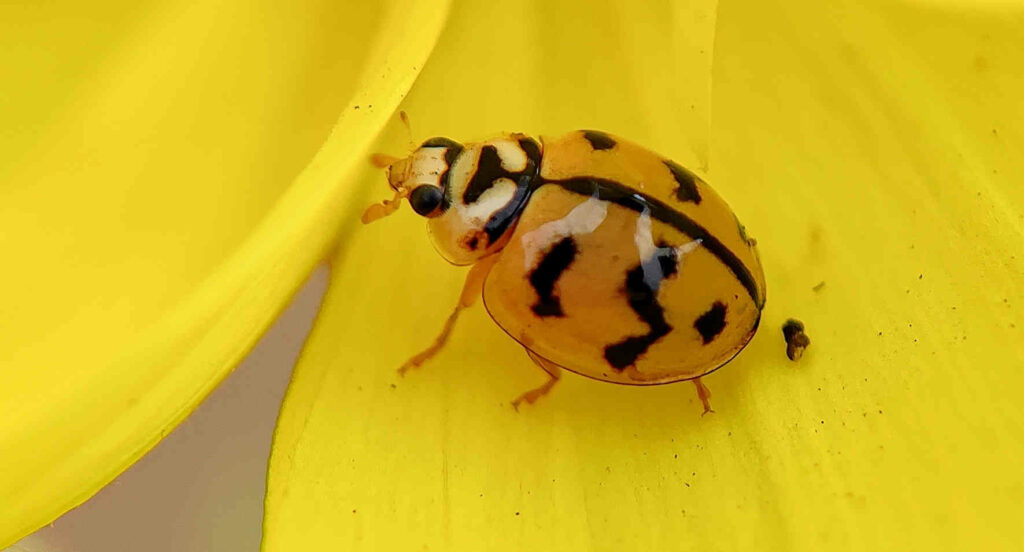
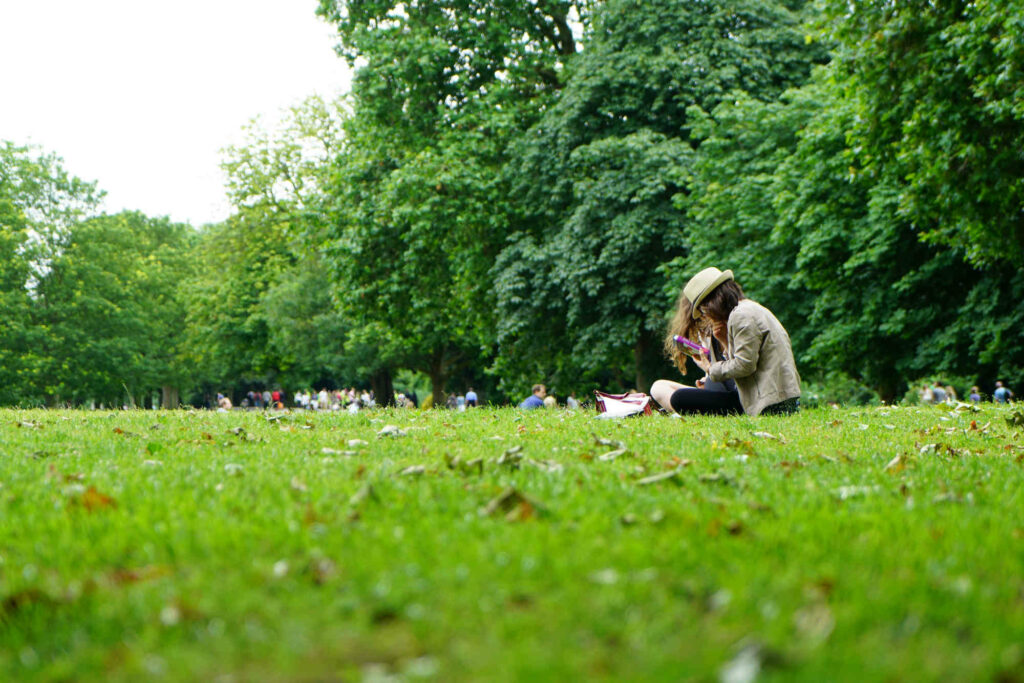

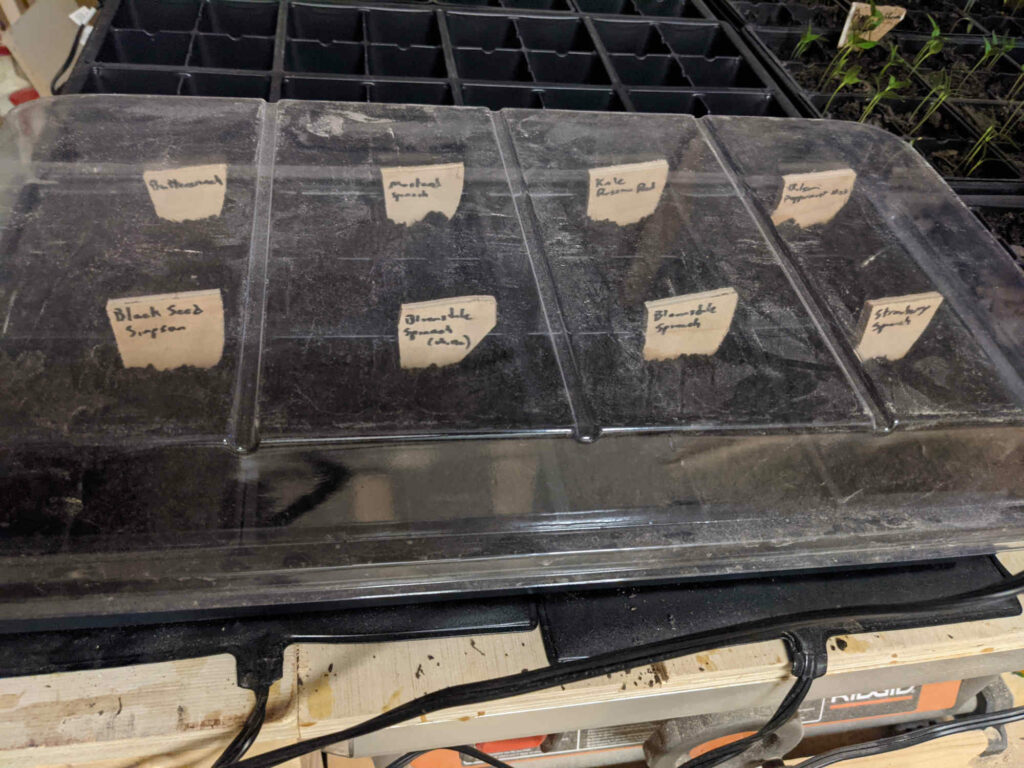
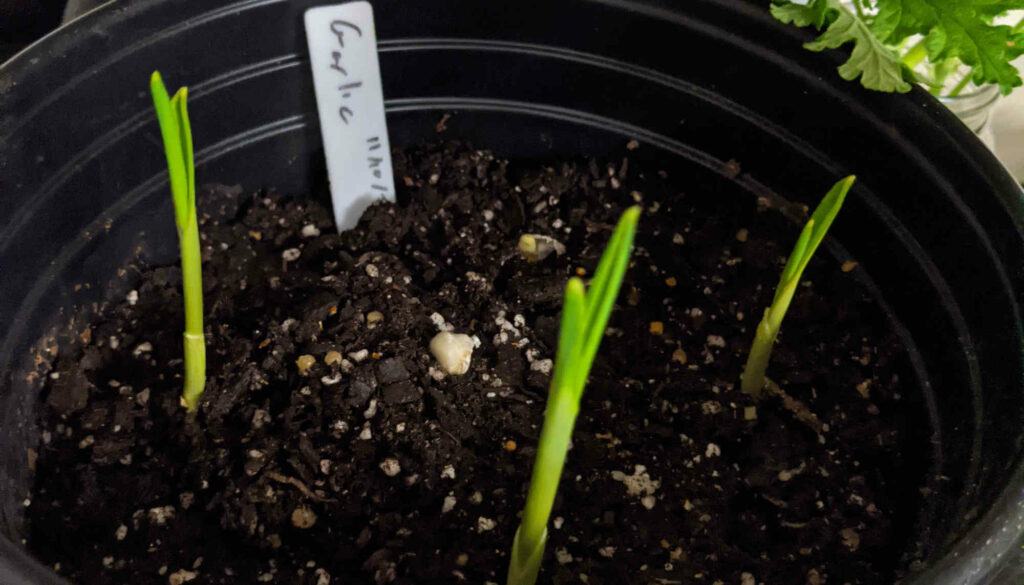
Leave a Reply